WaterFolder Day 2023 - Gdańsk, Poland
Jacek Kazimierczak
CEO of Lepidopterra
What is WaterFolder Day? It is a national event for rainwater engineers, both those affiliated to the WaterFolder platform (www.WaterFolder.com) and those who are not yet using professional selection tools in the design and planning of drainage and retention systems. The last edition attracted 450 participants!
On 28 March you will meet us at the national conference in Gdańsk. Thanks to Karol Podyma from Łąki Kwietne we will take part in a day-long intensive meeting of experts, designers, operators and manufacturers who share their design experience and introducing their technical innovations. We are enthused by the possibilities of digitalisation and to discuss concrete case studies. We will have the opportunity to speak directly to representatives of global companies from the industry and experts in the fields of measurement, hydrodynamic modelling, design and bring their attention to rewilding processes which can lead to greater biodiversity.
"In addition to treatment, constructed wetlands are often designed as dual- or multipurpose ecosystems which may provide other ecosystems services such as flood control, carbon sequestration or wildlife habitat."
Flower meadows are a great example of Nature Based Solutions which can support butterflies. The multi-level structure and the multitude of different plant species make them a successful option for use as part of green roofs, rain gardens or artificial wetlands. Thanks to their extensive root systems and lush above-ground parts, they are able to minimise harmful run-off by absorbing rainwater, reduce the risk of flooding or protect the environment by cleaning the water of harmful substances. Their positive impact on biodiversity is also invaluable, providing a habitat for many species of insects and other animals. One example of innovative measures to support biodiversity and water retention is the establishment of swamp filters and vertical flow filter fields in wastewater treatment technologies, and retention in the ground. In the near future, many projects supporting biodiversity through man-made artificial ecosystems with fluctuating groundwater levels are expected to simulate fluctuations in semi-natural variable wet meadows and low bogs. Their intrinsic element is appropriately selected vegetation. We will talk about how these solutions work and how to select plant species for them in our workshop. You are welcome.
Chalk, gypsum and limestone grasslands

Gypsum, chalk and limestone grasslands are also extremely valuable habitats. It creates exceptional conditions for many butterflies, moths and other species.
Railway lines - new way to biodiversity

Used and especially disused railway lines have great potential in recreating the diversity of butterflies and moths.
We want to hear from

